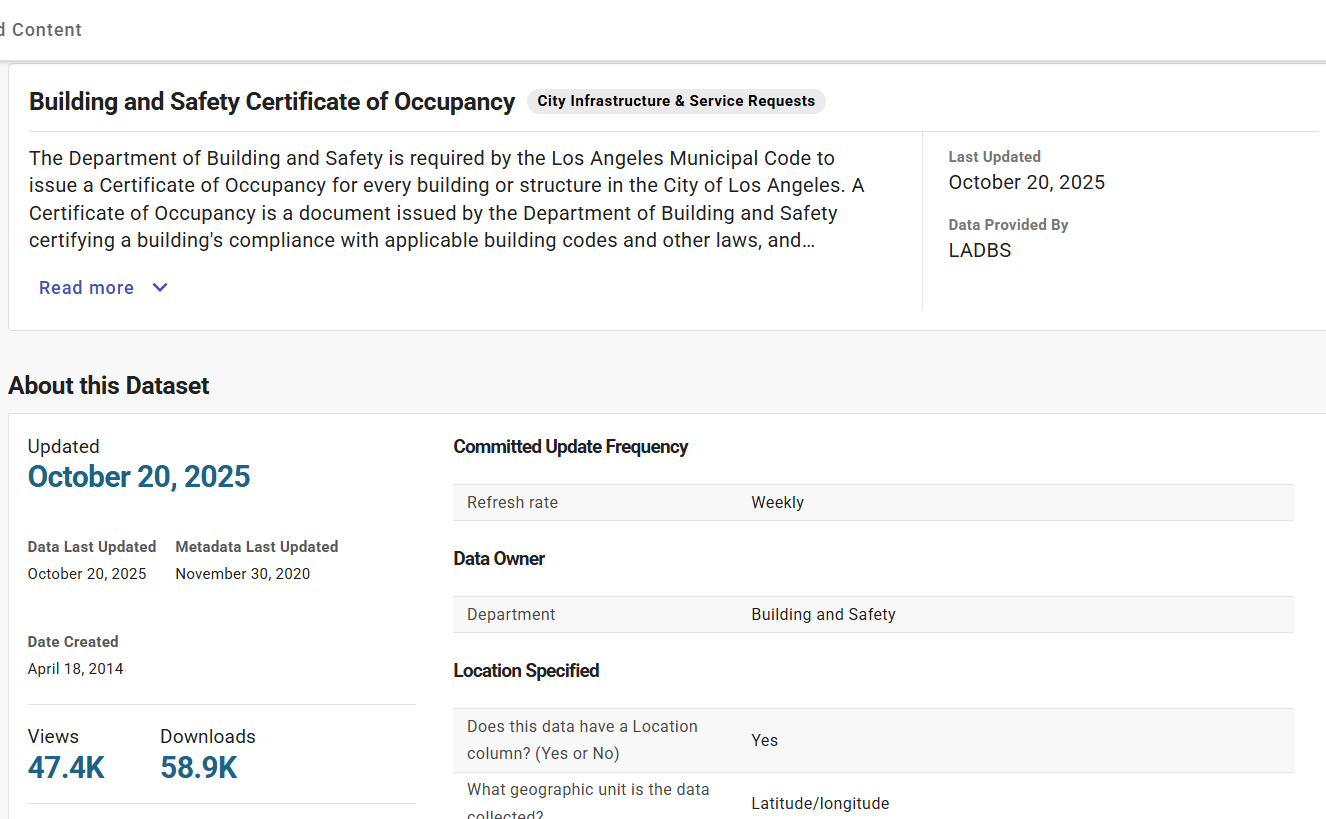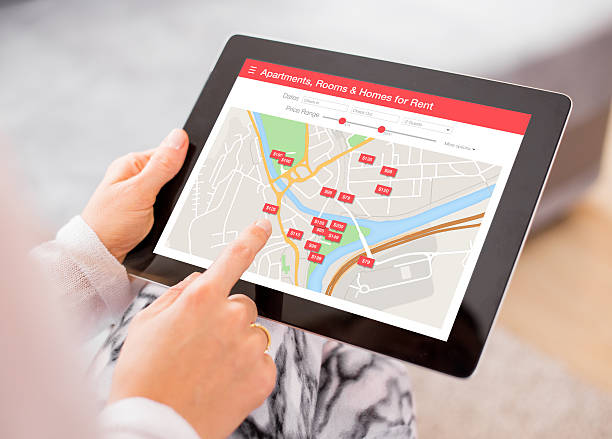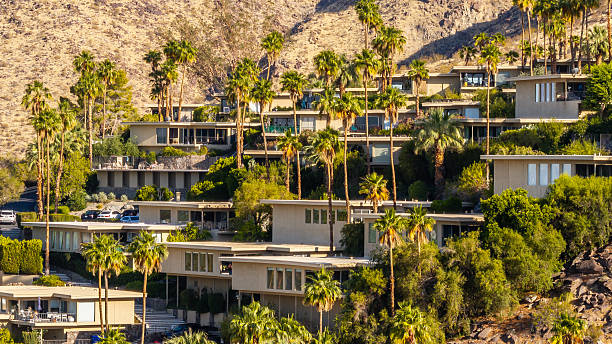Getting a building permit in Los Angeles can test your patience. Even small home projects often take weeks or months to clear plan check. The city’s review process involves multiple departments, shifting codes, and strict technical details.
Table of Contents
ToggleBut here’s the good news — it’s possible to move faster. You can cut weeks off your approval time if you understand the system and prepare properly.
At JDJ Consulting Group, we’ve seen how the right steps, the right paperwork, and a bit of strategy can make all the difference. Whether you’re building an ADU, remodeling a home, or developing a new mixed-use site, this guide shows you how to get your permit faster and avoid costly stalls.
Let’s start by understanding what makes the Los Angeles process so complex — and how the system is changing in your favor.
The Permitting Reality in Los Angeles: What’s Changed (and Why It Matters)
Los Angeles is famous for two things — sunshine and paperwork. Every project, from a kitchen remodel to a multi-story apartment, must pass through city review.
The Los Angeles Department of Building and Safety (LADBS) oversees most building permits inside city limits. It checks your plans for safety, zoning compliance, and energy rules. Meanwhile, LA City Planning handles land-use approvals, conditional permits, and design reviews. If your property lies outside city boundaries, the Los Angeles County Building and Safety Division may be the agency in charge.
Until a few years ago, everything happened in person. Applicants waited in long lines, passed paper sets of drawings, and came back days later for updates. That model has shifted.
Faster Systems You Should Know
The city now runs several digital and express channels designed to speed things up.
| System | Purpose | Average Processing Time | Best For |
|---|---|---|---|
| ePlanLA | Online plan check platform for most construction types | 2–6 weeks (depends on complexity) | Full building plans and larger remodels |
| PermitLA | Online express permits for simple work | Same day to 3 days | Small-scale jobs like HVAC, re-roofing, or minor plumbing |
| City Planning Expedited Processing Section (EPS) | Paid fast-track for qualifying projects | 30–50% faster than standard | Housing or commercial projects with zoning clearance |
| Counter Plan Check (CPC) | Walk-in plan check for simple projects | Same day or next day | Small tenant improvements, simple additions |
These updates mean homeowners and builders no longer need to visit the office for most applications. Yet the process still demands accuracy. One missing sheet or unchecked box can push your file back to the end of the line.
Pro tip: Know which system your project qualifies for before you apply. Using the wrong portal or skipping a zoning review can easily add weeks to your timeline.
The Fastest, No-Nonsense Checklist (Quick Wins You Can Do Today)
If you want to speed things up, start with small actions that make a big difference. Below are simple steps that can trim weeks off your permit timeline — and reduce stress along the way.
1. Confirm Your Project Type and Permit Path
Different projects follow different tracks. Before you upload any drawings, figure out if your job qualifies for express handling or requires full plan review.
| Project Type | Permit Option | Expected Turnaround |
|---|---|---|
| Water heater, HVAC, re-roof | Express Permit via PermitLA | 1–3 days |
| Small residential remodel | Counter Plan Check or ePlanLA | 2–4 weeks |
| ADU or new construction | ePlanLA + Planning Review | 6–12 weeks |
| Commercial tenant improvement | Full plan check + agency coordination | 8–16 weeks |
Use PermitLA’s online questionnaire to check eligibility. If your project fits express criteria, apply there first. You can often pay fees and receive approval without visiting an office.
2. Prepare Your Drawings and Forms Correctly
LADBS reviewers don’t reject drawings because they dislike them — they reject them because something’s missing. Double-check that:
- Each drawing page is titled, scaled, and numbered.
- The cover sheet lists your address, scope of work, and relevant codes.
- PDFs are bookmarked and searchable (ePlanLA requires this).
- Energy compliance documents (Title 24 forms) are uploaded as separate files.
Even small format mistakes cause delays. The cleaner your set, the faster reviewers move.
3. Use Pre-Check Reviews with Your Architect or Engineer
Ask your design team for a “code compliance check” before uploading. A quick 30-minute review can catch zoning, egress, or structural items that cause corrections later.
Small adjustments now — like adjusting window egress size or labeling fire walls — can save multiple review cycles later.
4. Create a Response Plan for Corrections
When LADBS issues corrections, act fast. Respond within 48 to 72 hours if possible. A slow reply resets your spot in the queue. Prepare your team to answer comments quickly and keep your files organized by date and version.
5. Keep Communication Clear and Polite
Reviewers handle hundreds of files. A respectful email with clear details gets faster responses than an unclear message chain. When you can, summarize your questions in a single, concise email instead of multiple back-and-forth notes.
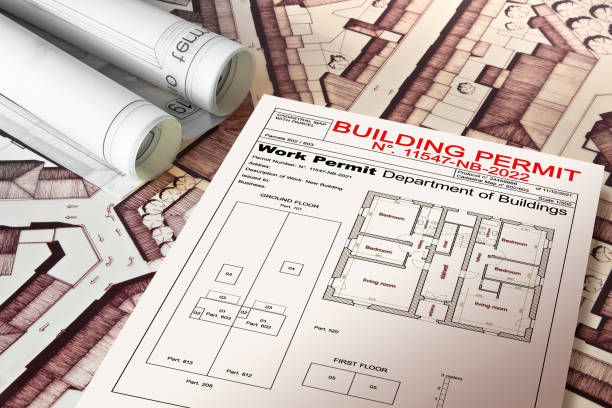
How LADBS and City Planning Review Works (Pick the Right Lane)
Every permit in Los Angeles goes through a specific lane — or sometimes, several lanes. Knowing which one applies to your project helps you save both time and money. Most delays happen because applicants send plans to the wrong department or skip a required review step.
Let’s break down how the city handles each type of submission and what you can do to move through faster.
The Two Main Authorities: LADBS vs. City Planning
The Los Angeles Department of Building and Safety (LADBS) reviews your construction plans for building code compliance, structure, fire safety, and energy rules. The City Planning Department, on the other hand, checks zoning, use, and design restrictions before LADBS can issue a building permit.
In short:
LADBS = Safety and construction.
Planning Department = Zoning and land use.
If your project involves height, setbacks, density, or use changes, City Planning must approve first. Only then can LADBS begin its plan check.
How LADBS Plan Check Works
LADBS uses digital submission systems to review projects. For most work, you’ll use ePlanLA, the city’s online plan review portal. You upload your plans, pay fees, and track the review from your account.
Typical LADBS Workflow
Application Submitted — You upload your forms and drawings to ePlanLA.
Initial Screening — LADBS staff check for missing information or incorrect formats.
Plan Review Assigned — Your project goes to a plan checker (structural, mechanical, electrical, etc.).
Corrections Issued — You receive notes through the portal.
Resubmittal and Approval — Once corrections are cleared, you receive your permit.
Tip: Submit your documents early in the week. Fridays often have a backlog, which can push reviews into the following week.
Express Permits and Counter Plan Checks
Not every project needs full review. For smaller jobs, LADBS offers Express Permits through PermitLA and Counter Plan Checks (CPC) at local offices.
These are the fastest options available — often within days. However, they apply only to limited scopes of work.
| Fast Track Option | Eligible Work Types | Documents Needed | Average Time |
|---|---|---|---|
| PermitLA (Online Express) | Water heaters, HVAC, electrical upgrades, re-roofing, minor plumbing | Simple scope form, photos, license info | Same day to 3 days |
| Counter Plan Check (In-Person) | Small remodels, non-structural tenant improvements | Basic floor plan, scope letter | 1–2 days |
| ePlanLA Standard Review | Additions, ADUs, new builds | Full construction set, energy forms, soils, structural | 2–8 weeks |
| Expedited Plan Check (Paid Option) | Large or time-sensitive projects | Full submittal, expedited fee | 25–50% faster |
If your project doesn’t qualify for Express or Counter review, ePlanLA remains your main path.
For high-value or schedule-driven builds, LADBS also offers an Expedited Plan Check service for an extra fee. It gives your file priority over standard reviews — often cutting total time nearly in half.
When City Planning Gets Involved
City Planning reviews are often required for projects that:
Add new dwelling units (like ADUs or duplex conversions).
Modify the site layout, parking, or landscaping.
Fall under a Specific Plan or Design Overlay area.
Request any zoning variance or conditional use.
If your property falls into any of these categories, start with City Planning before sending drawings to LADBS. They’ll issue a Planning Clearance or Case Number that LADBS must reference.
Common Coordination Mistakes to Avoid
Many applicants lose time because of coordination errors. Avoid these:
Submitting to LADBS before Planning clearance.
Forgetting supplemental reviews (Fire, Public Works, Health).
Uploading outdated forms — LADBS updates templates yearly.
Missing the owner’s authorization form in online submittals.
A good permit expediter or consulting team can help manage these steps. They know who to contact, which forms apply, and how to get quick feedback from reviewers.
Why Picking the Right Lane Saves Weeks
Each department operates on different review cycles. Submitting to the wrong one first means your project waits twice. By identifying the correct lane from the start — express, counter, standard, or expedited — you can prevent duplication and confusion.
That’s why builders often say, “Getting a permit fast in Los Angeles isn’t luck — it’s strategy.”
When to Hire a Permit Expediter (and How They Actually Speed Things Up)
You can file your own permit application in Los Angeles — but that doesn’t always mean you should.
For simple jobs like replacing a water heater or re-roofing, applying through PermitLA is usually enough. But once your plans involve structure, zoning, or multiple departments, you enter a maze of reviews that can drag for months.

That’s where a permit expediter comes in. These professionals act as your liaison with LADBS and other city agencies. They don’t skip steps or pull strings; instead, they make sure every part of your submission is clean, compliant, and seen by the right people at the right time.
What a Good Permit Expediter Actually Does
A skilled expediter is part translator, part coordinator, and part project manager. Their main goal is to keep your permit moving forward while you focus on design and construction.
Here’s what that looks like in practice:
Pre-Submittal Review – They check all forms, signatures, and plan sets before submission.
Agency Coordination – They schedule reviews with LADBS, Planning, Fire, and Public Works (if needed).
Response Handling – When reviewers issue corrections, the expediter gathers all responses and resubmits in one organized package.
Follow-Up Communication – They email or call plan checkers directly to confirm timelines and resolve unclear comments.
Inspection Scheduling – Some expediters help coordinate early inspections or certificate sign-offs.
The result is fewer bottlenecks and less guesswork.
How Much Does a Permit Expediter Cost in Los Angeles?
Fees vary by project type, scope, and complexity. Some charge flat rates; others bill hourly. On average, Los Angeles expediters cost less than the expense of even a one-week construction delay.
| Project Type | Typical Expediter Fee | What’s Included | Average Time Saved |
|---|---|---|---|
| Small remodel / addition | $1,000 – $2,500 | Plan check filing, correction coordination | 2–4 weeks |
| ADU or duplex | $2,500 – $4,000 | Multi-agency review, Planning coordination | 4–6 weeks |
| Commercial tenant improvement | $3,000 – $6,000 | LADBS + Fire + Health coordination | 6–8 weeks |
| Ground-up residential / mixed-use | $5,000+ | Full plan tracking and expedited scheduling | 8–12 weeks |
While the cost may seem high upfront, expediters often pay for themselves. Every day your project sits idle costs money — in labor, rent, or carrying costs. An experienced expediter keeps that downtime minimal.
The Hidden Value: Relationships and Local Knowledge
LADBS reviewers handle hundreds of files every month. Experienced expediters understand their workflow and expectations. They know which forms are outdated, which departments are backed up, and when to time a submission to hit a review window.
They also know the “soft details” that slow people down — small formatting errors, unlabeled sheets, or inconsistent plan indexes. Because they’ve seen it all, they catch issues long before a plan checker does.
Here’s a simple comparison to show the difference an expediter can make:
| Task | Handled by Owner | Handled by Expediter |
|---|---|---|
| Identify correct departments | Often uncertain; requires research | Confirms correct departments instantly |
| Prepare submittal package | Can miss forms or attachments | Complete and formatted per LADBS checklist |
| Respond to correction notices | May take weeks | Compiles and resubmits in days |
| Coordinate with multiple agencies | Time-consuming and confusing | Streamlined, handled through direct contacts |
| Track permit progress | Manual follow-ups | Continuous tracking with clear updates |
When You Should Definitely Hire a Permit Expediter
Consider hiring an expediter if:
Your project involves multiple agencies (LADBS, City Planning, Fire, Health).
You’re on a tight construction schedule or facing financing deadlines.
You’ve had previous permit rejections or delays.
You’re managing out-of-town projects or can’t visit offices in person.
Developers often treat permit expediting as insurance — a way to protect schedules, budgets, and client relationships.
How JDJ Consulting Helps Move Projects Faster
At JDJ Consulting Group, we’ve worked with architects, contractors, and developers across Los Angeles to simplify their approval process. Our team coordinates directly with LADBS, Planning, and related city agencies to manage every step — from pre-submittal reviews to final sign-off.
We focus on communication, accuracy, and consistency, so our clients don’t lose weeks over technical details or missing paperwork. That’s why many repeat clients trust JDJ for complex permits — it’s not about skipping the line; it’s about staying one step ahead.
How to Prepare a Winning Permit Package
A well-prepared permit package is the single most important factor in getting your project approved quickly. Even a small missing form or unclear plan label can send your submittal back for corrections, adding weeks to your timeline.

At JDJ Consulting Group, we often tell clients that “speed starts with accuracy.” When your plans are complete, consistent, and properly formatted, city reviewers can move through them without delay.
Start with a Clean and Complete Checklist
Before you submit, make sure every required document is ready and up to date. Here’s a simple checklist that works for most Los Angeles building permit applications:
| Required Document | Purpose | Common Mistake to Avoid |
|---|---|---|
| Application Form (LADBS) | Official request to start review | Missing owner or license info |
| Plan Set (Architectural, Structural, MEP) | Main technical package | Inconsistent sheet numbering |
| Site Plan | Shows property lines, setbacks, easements | Not scaled or improperly labeled |
| Title 24 Report | Energy compliance for residential & commercial | Missing signatures |
| Soils or Geotech Report (if required) | Verifies site stability and safety | Not stamped by a licensed engineer |
| Owner-Builder Form or Contractor Authorization | Confirms project representative | Wrong license category selected |
| Fire Department Clearance (if applicable) | Needed for commercial and multifamily | Submitted to wrong division |
A good permit expediter will pre-check this list and catch any missing or outdated items before your application hits LADBS.
Keep Your Plans Clear and Easy to Review
Reviewers aren’t trying to slow your project down — they just need clarity. When plan sets are organized and labeled properly, your file moves through faster.
Here’s what helps:
Use consistent sheet numbering and clear titles (A1.0, A2.0, S1.0, etc.).
Include a table of contents on the cover sheet for quick navigation.
Add revision clouds or notes where changes were made after corrections.
Avoid cluttered drawings; reviewers should see information at a glance.
Ensure all digital PDFs are searchable, not image-only scans.
A clean plan set reduces back-and-forth emails and shortens review cycles.
Common Reasons LADBS Rejects a Permit Package
Many rejections come down to small, preventable errors. Below are frequent reasons permits get kicked back — and how to avoid them.
| Rejection Reason | How to Prevent It |
|---|---|
| Missing licensed professional stamps | Double-check all final sheets before upload |
| Inconsistent project addresses | Match your plans, forms, and title block |
| Unclear scope of work | Write short, descriptive scope summaries |
| Incorrect valuation or fee calculations | Verify using the LADBS valuation guide |
| Missing signatures | Ensure all digital and physical forms are signed |
| Submittal to wrong division | Confirm if your project is residential or commercial |
| Outdated forms or templates | Always download new forms from LADBS.gov |
Avoiding these simple mistakes can save you multiple plan check rounds.
How JDJ Consulting Ensures Package Accuracy
Our consultants conduct a three-stage review before any permit submission:
Technical Check: Confirm all required drawings, reports, and forms.
Formatting Check: Ensure plan consistency, sheet sequencing, and title accuracy.
Agency Check: Match submittal to the right LADBS or Planning division.
This layered review process helps our clients avoid delays and maintain consistent communication with the city.
A Small Tip That Makes a Big Difference
Label every uploaded file with a clear name. Instead of “plan_final_v3.pdf,” use “123Main_ArchitecturalPlans_2025.pdf.” City reviewers see hundreds of files daily — small details like this make your project easier to find and process.
Understanding the LADBS Plan Check Process (Step-by-Step)
Once your permit package is submitted, it enters what the city calls “Plan Check.” This is where Los Angeles Department of Building and Safety (LADBS) reviewers carefully evaluate your drawings for compliance with codes, zoning, and safety regulations.
The process might sound intimidating, but when you understand each step, it becomes much easier to manage — and faster to move through.
Step 1: Initial Screening and Application Intake
After submission, LADBS performs an initial screening to confirm your package is complete. They check whether all required documents, signatures, and forms are attached.

If something is missing, your application will be marked as “Returned for Corrections” before plan review even begins. At JDJ Consulting Group, we make sure every file passes this stage smoothly by reviewing the checklist before upload.
What to expect at this stage:
Application review within 3–5 business days.
Assignment of a plan check number (your project’s tracking ID).
Email confirmation with payment instructions and next steps.
2nd Step: Plan Distribution to Review Divisions
Once accepted, your plans are routed to different city departments. Each division checks specific aspects of your project.
Here’s how LADBS typically divides the review:
| Department | What They Review | Applies To |
|---|---|---|
| Building Plan Check | Structural, architectural, accessibility | All projects |
| Mechanical, Electrical & Plumbing (MEP) | System design and code compliance | Larger remodels, commercial |
| Fire Department | Access, hydrants, sprinklers | Multifamily, commercial |
| Planning Division | Zoning, land use, height, setbacks | New buildings or additions |
| Public Works | Sewer, grading, street encroachments | Projects with site work |
| Green Building / Sustainability | Title 24, CALGreen standards | All new construction |
For simple residential remodels, you may only deal with the Building Plan Check and Planning divisions. For larger commercial or mixed-use projects, several agencies may be involved.
Step 3: First Plan Review (Initial Corrections)
During the first round, each reviewer studies your plans and notes corrections. This is where most applicants lose time — but it doesn’t have to be that way.
If your plans are well-prepared, corrections will be minor and specific. If not, they can be broad, forcing a full resubmittal.
At JDJ Consulting Group, we often prepare a “correction log” — a document that organizes reviewer comments into clear tasks, so architects and engineers can revise efficiently.
Tips for managing corrections:
Address every note, even minor ones.
Highlight changes on revised sheets using clouds or color marks.
Upload a “response letter” explaining what was corrected.
Double-check digital file names and sheet numbers before resubmission.
A well-structured response package helps reviewers approve your revisions faster.
Step 4: Recheck and Approval
Once you upload your corrected plans, LADBS reviewers revisit only the items they marked in the first round. If everything checks out, you’ll receive “Approved for Permit Issuance.”
At that point, you pay the remaining fees, and your permit is ready for pickup or digital download. For some projects, additional clearances may still be needed — such as Fire, Public Works, or Planning sign-offs — before final permit release.
5th Step: Permit Issuance and Ready-to-Build
When your permit is issued, you’ll receive an official set of stamped plans. These are your “field copies” that inspectors will use during construction.
Make sure you keep both digital and printed versions handy. Also, double-check that your contractor’s license, insurance, and bond are current — LADBS verifies this before inspection scheduling.
How Long Each Step Takes (Typical Timelines)
Timelines vary by project type, but here’s a general estimate for Los Angeles:
| Permit Type | Average Plan Check Duration | With Expeditor or Consultant |
|---|---|---|
| Small Residential Remodel | 3–5 weeks | 1–2 weeks |
| New Single-Family Home | 6–8 weeks | 3–4 weeks |
| Commercial Tenant Improvement | 8–10 weeks | 4–6 weeks |
| Multifamily or Mixed-Use | 12–16 weeks | 6–8 weeks |
Working with a consultant like JDJ often cuts processing time in half because your package enters review fully compliant and organized.
Quick Tip: Always Track Your Application Online
LADBS offers an online Permit & Inspection Report (PIR) tool. It lets you view your project status, assigned reviewer, and pending corrections in real time.
You can access it at: https://www.ladbsservices2.lacity.org/onlineservices/?service=plr
Knowing exactly where your project stands helps you plan construction schedules confidently.
Post-Permit Steps: Inspections, Corrections, and Staying on Schedule
Once your permit is approved, you’ve cleared one of the biggest hurdles in the Los Angeles building process. But the job isn’t done yet — you still need to pass city inspections and manage your schedule carefully.
Each stage of construction must meet the Los Angeles Department of Building and Safety (LADBS) requirements before you move to the next phase. These inspections confirm that your work matches approved plans and complies with all codes.
Understanding LADBS Inspections: What They Check and When They Happen
LADBS inspections are divided by construction stages. Here’s a quick overview of what to expect and when:
| Inspection Type | When It Happens | What’s Checked |
|---|---|---|
| Foundation / Footing | Before pouring concrete | Soil compaction, rebar placement, formwork alignment |
| Framing | After structural framing and rough utilities | Stud spacing, load-bearing walls, structural connections |
| Rough Plumbing / Electrical | Before drywall installation | Pipe placement, wiring, junction boxes, venting |
| Insulation | Before wall closure | Energy compliance, vapor barriers |
| Drywall / Lath | After insulation approval | Proper fasteners, wall finish prep |
| Final Inspection | When all work is complete | Safety, accessibility, and code compliance |
Missing or failing an inspection can delay your project for days or weeks. That’s why having a schedule and staying proactive is key.
How to Schedule Inspections Quickly
LADBS offers two main ways to schedule your inspections:
Online through LADBS.org
Log in to your account and select your permit number.
Choose an available inspection date and time window.
By Phone via 311 or the LADBS Inspection Request Line
Available for next-day inspections if requests are made before 3 PM.
At JDJ Consulting Group, we often pre-schedule inspections strategically to keep contractors and city inspectors aligned. This approach helps prevent downtime and keeps construction timelines tight.
Tips to Pass Inspections the First Time
Getting a “pass” on your first inspection saves both time and money. Here are some simple but effective tips:
Keep approved plans and permits on-site at all times.
Make sure the area is accessible for inspectors — no blocked panels or equipment.
Confirm that contractors are present to answer any technical questions.
Fix minor issues before the inspector arrives.
Use a checklist for each stage to ensure all required work is ready.
If you do fail an inspection, don’t panic. LADBS usually lists specific corrections, which can often be resolved within a day or two.
Handling Corrections and Re-Inspections
If the inspector flags any issues, you’ll receive a correction notice. It lists what needs to be fixed before re-inspection.
Here’s how to handle it efficiently:
Review the correction notice carefully with your contractor.
Take photos of the fixed area for your records.
Schedule a re-inspection as soon as corrections are completed.
Keep a record of every inspection date and result — this helps later during final approval.
JDJ Consulting Group often helps clients coordinate these steps so that even complex projects stay compliant and on schedule.
Staying on Schedule: Practical Ways to Avoid Delays
Even small oversights can cause unexpected delays. Here are a few real-world strategies our team uses to keep construction timelines steady:
Set a realistic schedule that includes permit and inspection buffers.
Communicate early with LADBS inspectors if there are design changes.
Bundle inspections when possible (for example, framing + rough electrical).
Track progress digitally using project management software or shared logs.
Keeping your team, consultants, and city reviewers aligned can cut weeks off your total timeline.
A Note on Final Inspection and Certificate of Occupancy
Once all stages pass, your project goes through a final inspection. This last step ensures the building is safe and ready for occupancy.
If your project is a new home or commercial space, LADBS will issue a Certificate of Occupancy (C of O). You’ll need this document before tenants move in or businesses open.
For remodels, a “Finaled” permit record usually completes the process.
Avoiding Permit Delays: Real Challenges and Smart Solutions
Even the best-designed project can slow down if the permit process hits a snag. In Los Angeles, small errors, missing clearances, or unexpected plan corrections can stretch a few weeks into several months.
The good news is — most of these delays are avoidable with careful planning, accurate documentation, and clear communication with city staff.
Let’s look at what usually causes permit delays and how you can prevent them.
The Most Common Reasons Permits Get Delayed
Whether you’re building a custom home, an ADU, or a tenant improvement, the causes of delays are surprisingly consistent. Here’s a breakdown of the most frequent issues we see across Los Angeles projects:
| Reason for Delay | What It Means | How to Prevent It |
|---|---|---|
| Incomplete Submittal | Missing forms, reports, or signatures | Use a pre-checklist before uploading files |
| Plan Corrections | Reviewers find code or formatting errors | Have consultants or expeditors review plans first |
| Incorrect Valuation or Fees | Miscalculated project cost or square footage | Verify valuations with LADBS fee estimator |
| Department Coordination Delays | Waiting on Planning, Fire, or Public Works | Track all departments through the online dashboard |
| Design Changes Mid-Review | Updated scope or drawings after submission | Finalize design before starting plan check |
| Missed Communication | Emails from LADBS go unanswered | Check your portal or email daily for updates |
Each of these may seem small, but together they can add weeks to your project timeline.
Why LADBS Timelines Can Vary So Much
Los Angeles is one of the busiest building departments in the country. Seasonal surges, staffing changes, and public holidays all affect how quickly reviews move.
For example:
Spring and summer see the highest number of submittals as projects ramp up.
End-of-year holidays slow reviews, especially if your project needs multi-agency clearances.
Complex zoning reviews or discretionary approvals can double your review time.
That’s why JDJ Consulting Group often builds a “permit buffer” into every project schedule — usually two to four extra weeks beyond the city’s average estimate.
This helps clients plan financing, construction schedules, and contractor bids more realistically.
Smart Solutions That Keep Projects on Track
With the right strategies, you can avoid most of the issues that delay permits. Here are proven steps that work in real Los Angeles conditions:
1. Submit a “Ready-to-Approve” Package
Every form, plan, and report should meet LADBS standards from the start. That means clear sheet formatting, consistent labeling, and properly stamped documents.
A clean submittal often moves through plan check in half the usual time.
2. Maintain a Single Point of Contact
Having one designated consultant or expeditor managing communication prevents missed updates or duplicate messages. This is especially helpful for projects that involve multiple engineers, contractors, and owners.
3. Track Your Application Weekly
The LADBS online portal lets you check reviewer assignments, status updates, and correction logs. Logging in once or twice a week ensures you never miss a deadline or correction notice.
4. Handle Corrections Within 3–5 Days
Fast turnaround on corrections tells reviewers your team is responsive and serious about approval. At JDJ, we organize correction responses and revisions within a few business days — often leading to faster recheck approvals.
5. Schedule Pre-Submittal Meetings
For large or complex projects, an early consultation with LADBS or Planning staff saves weeks later. You’ll know exactly what they expect before you pay fees or submit plans.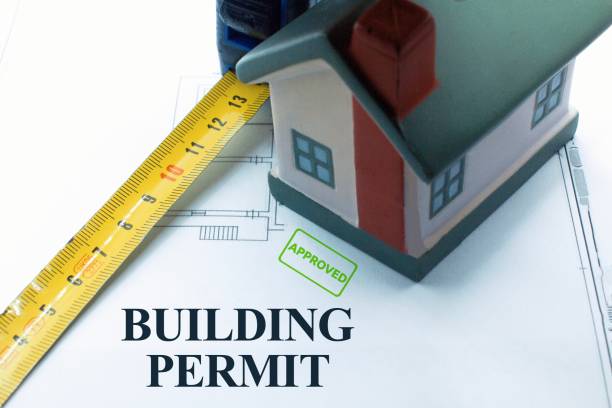
How JDJ Consulting Group Helps Clients Avoid Delays
Our team has years of experience working directly with Los Angeles city agencies. We don’t just submit paperwork — we manage the process strategically.
Here’s how our system works:
Project Audit: We review plans, checklists, and documents before submission.
Submission Strategy: We decide the best timing and routing through LADBS divisions.
Active Monitoring: We track status updates and follow up with reviewers when needed.
Correction Coordination: We manage responses and ensure revisions meet all notes.
This hands-on process keeps your permit moving without unnecessary slowdowns.
Real-World Example: Cutting a 10-Week Delay Down to 3 Weeks
One of our recent clients submitted plans for a mixed-use renovation in Koreatown. Their original application was delayed due to missing Fire Department clearance.
After JDJ Consulting Group got involved, we reviewed the package, corrected documentation errors, and re-coordinated with both Fire and Planning divisions. Within three weeks, the project was approved — saving the client nearly two months.
That’s the difference an experienced consultant can make.
The Role of Permit Expeditors and Consultants in Los Angeles
In a city as complex as Los Angeles, building permits involve far more than just paperwork. Every project touches multiple departments, code sections, and approval stages.
That’s where permit expeditors and development consultants come in — they make the process faster, smoother, and less stressful for builders and property owners.
At JDJ Consulting Group, we specialize in this exact role — acting as your liaison between your design team and city reviewers to move your project forward efficiently.
What a Permit Expeditor Actually Does
Many people think a permit expeditor just drops off forms or waits in line at LADBS. In reality, a good expeditor does much more. They understand the workflow inside each department, know what reviewers look for, and ensure your package meets those standards before submission.
Here’s what our team typically handles for clients:
| Service | Purpose | How It Speeds Up Permitting |
|---|---|---|
| Pre-Submission Review | Checks for missing or incorrect items | Avoids rejection at intake |
| Document Coordination | Organizes architectural, structural, and MEP plans | Ensures clarity across disciplines |
| City Agency Routing | Determines which departments must review | Reduces back-and-forth with wrong divisions |
| Status Tracking | Monitors your file across LADBS systems | Detects hold-ups early |
| Correction Response | Helps revise plans and write response letters | Cuts time between review rounds |
| Fee and Clearance Coordination | Manages payments and secondary clearances | Prevents late-stage bottlenecks |
In short, we handle the technical side so you can stay focused on construction and project planning.
Why Los Angeles Projects Benefit from Professional Expediting
LADBS handles thousands of applications every month, from ADUs to multi-story developments. Even a small filing mistake can delay your review for weeks.
A permit expeditor brings local insight — they know which plan checkers specialize in what project types, how to prepare digital submittals properly, and which checklists apply to your project category.
Here’s why professional expediting makes a difference:
Local experience: Knowing each city division’s workflow helps set realistic timelines.
Up-to-date knowledge: Expeditors stay current on new codes and digital submission updates.
Hands-on follow-up: Instead of waiting on automated status updates, they communicate directly with reviewers.
Simplified corrections: Consultants prepare clean responses so reviewers can approve without extra rounds.
These small efficiencies compound into real time savings — sometimes cutting approval periods in half.
Consultants vs. Expeditors: What’s the Difference?
While both roles overlap, there’s an important distinction:
Permit Expeditors focus on managing and submitting documentation to LADBS and related agencies.
Development Consultants take a broader role — they help plan the project strategy, evaluate zoning, and coordinate approvals from start to finish.
At JDJ Consulting Group, we do both. We help you understand feasibility early on, then carry that same project through permits, clearances, and construction oversight.
This continuity saves clients time, reduces errors, and ensures your permit process stays aligned with your development goals.
When Should You Hire a Permit Expeditor?
The best time to bring in an expeditor or consultant is before you submit your plans. Early involvement means we can review your documentation, flag issues, and set a clear submission timeline.
However, even mid-process support helps — especially if your application has already been delayed. We can step in, contact city reviewers, identify hold-ups, and get your permit back on track.
In fact, many of JDJ’s clients reach out after they’ve already hit a delay — and often see progress within days once we take over communication and coordination.

How JDJ Consulting Group Works with LADBS
Our consultants work directly with LADBS reviewers, not just through the online portal. This means we can:
Clarify code questions before submitting revisions,
Coordinate plan corrections across departments, and
Follow up in person when necessary to keep files active.
We also maintain strong working relationships with related agencies — such as Public Works, Fire, and Planning — which often speeds up clearance coordination for complex developments.
This kind of proactive communication is what consistently helps our clients achieve faster approvals.
Getting Started: Your Pre-Permit Checklist for Faster Approval
Every successful project in Los Angeles starts with strong preparation. Before you even click “submit” on the LADBS portal, taking a few extra steps can save you weeks — sometimes months — of back-and-forth corrections.
At JDJ Consulting Group, we call this your Pre-Permit Readiness Stage — a phase that ensures every document, drawing, and clearance path is aligned before submission.
Your Pre-Permit Checklist
Here’s a simplified checklist our consultants use to help clients stay on track:
| Step | Task | Purpose |
|---|---|---|
| 1 | Confirm Zoning and Use Compliance | Make sure your proposed use matches zoning allowances. |
| 2 | Review LADBS Submittal Requirements | Identify forms, plan sheets, and reports needed for intake. |
| 3 | Coordinate with Design Team | Verify architectural, structural, and MEP plans align. |
| 4 | Pre-Check Digital File Setup | LADBS requires specific naming and sheet formats. |
| 5 | Evaluate Environmental or Fire Restrictions | Some areas need extra clearances before intake. |
| 6 | Plan for Utility and Public Works Clearances | Early coordination avoids last-minute sign-off delays. |
| 7 | Budget for Plan Check Fees and Revisions | Set aside time and funds for review cycles. |
| 8 | Engage a Permit Expeditor or Consultant Early | Avoid unnecessary rejections or resubmissions. |
Each of these steps might seem small — but together, they can mean the difference between a 2-month or a 6-month approval process.
Common Mistakes That Slow Down Permits
Many first-time applicants underestimate how strict LADBS can be about digital formatting, missing checklists, or clearance routing. Common pitfalls include:
Submitting incomplete plan sets,
Forgetting secondary clearances (like Fire or Sanitation),
Using outdated forms, or
Failing to match file names and versions across disciplines.
These are easy to avoid with a professional review before you submit. That’s why most of JDJ’s clients prefer to bring us in at the concept stage rather than waiting for problems to appear later.
How JDJ Consulting Group Can Help You Start Strong
Our team specializes in bridging the gap between design and approval. We help developers, architects, and homeowners streamline every step — from feasibility to final inspection.
Here’s what our early-phase support includes:
Zoning and land-use feasibility studies,
Pre-submission plan check review,
Permit expediting and city agency coordination, and
Post-permit inspection guidance to keep your project compliant.
By staying involved from start to finish, we reduce costly surprises and keep your schedule realistic.
Ready to Move Forward?
If you’re preparing a new build, addition, or major renovation in Los Angeles, now’s the time to start your permit process right. Let JDJ Consulting Group help you navigate the city’s system efficiently and confidently.

